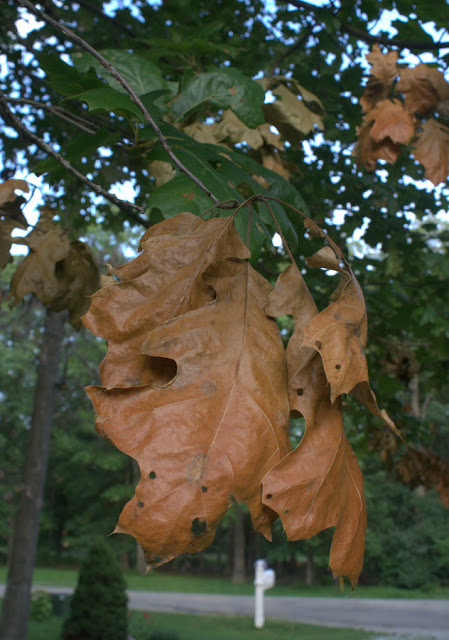ADSENSE Link Ads 200 x 90
ADSENSE 336 x 280
Back in May, I wrote about my experience seeing the emergence of the Great Southern Brood (Brood XIX) of cicadas (Magicicada sp.) down in Effingham, IL at Lake Sara. At the time, I was fascinated by the abundance of cicadas and the unusual nature of their life cycle. I didn't think there was much concern over the damage the cicadas might do to the trees on my in-laws property. From my research, it seemed that only very young trees would be damaged by the egg-laying of the cicadas.
The cicadas cut narrow slits into the bark of small twigs and the end of tree branches, into which they insert their eggs. The trees, particularly the oaks, in the area of the emergence all showed signs of egg laying.
What I didn't realize was that the damage caused by these slits in the twigs' bark would cause such significant leaf dieback in the trees.
My father-in-law shared that there was much concern among the lake residents when the damage first appeared, and someone even suggested there might be a pack of deranged squirrels wreaking havoc in the woods. A quick check with a local horticulturist identified the cicada damage.
While this won't likely cause any negative impact on the long-term health of these mature oaks, the cicada egg-laying has certainly caused a great deal of aesthetic damage to the trees in this season of the cicada emergence.







0 Response to "The Aftermath of the 13-Year Cicada"
Posting Komentar